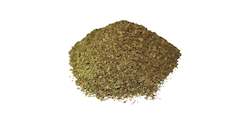Mint

Botanical name:mÃntha ⪠Family name: Lamiaceae
No meal of roast lamb would be complete without a liberal helping of fresh mint sauce (made with 2 tablespoons each of finely chopped mint leaves, boiling water and wine vinegar, and sugar to taste). This combination was enjoyed as long ago as the third century. The frist use of mint in teeth-cleaning perperations occured in the sixth century if not earlier - and to freshen up, the ancient Greeks used to bath in it.
Major producers: Asia, Northern Africa, South America
Taste and Aroma:
s are aromatic, almost exclusively perennial, rarely annual, herbs. They have wide-spreading underground and overground stolons and erect, square, branched stems. The leaves are arranged in opposite pairs, from oblong to lanceolate, often downy, and with a serrate margin.
Culinary uses:
The leaf, fresh or dried, is the culinary source of mint. Fresh mint is usually preferred over dried mint when storage of the mint is not a problem. The leaves have a pleasant warm, fresh, aromatic, sweet flavor with a cool aftertaste.
A spring of fresh mint gives a lovely flavour to fresh cooked vegetables, especially peas and potatoes, and chopped leaves add something extra to vegetable salads and dressings. On hot summer days, mint leaves provide a nice touch in fruit salads or cold drinks. Also, two or three fresh rubbed leaves added to milk will prevent it from curdling.
leaves are used in teas, beverages, jellies, syrups, candies, and ice creams. In Middle Eastern cuisine, mint is used on lamb dishes, while in British cuisine and American cuisine, mint sauce and mint jelly are used, respectively
a necessary ingredient in Touareg tea, a popular tea in northern African and Arab countries.
Historical uses:
was originally used as a medicinal herb to treat stomach ache and chest pains, and it is commonly used in the form of tea as a home remedy to help alleviate stomach pain.
During the Middle Ages, powdered mint leaves were used to whiten teeth. tea is a strong diuretic. A common use is as an antipruritic, especially in insect bite treatments (often along with camphor).
Menthol is also used in cigarettes as an additive, because it blocks out the bitter taste of tobacco and soothes the throat.
It is available in 50g, 100g, 250g and 500g.
